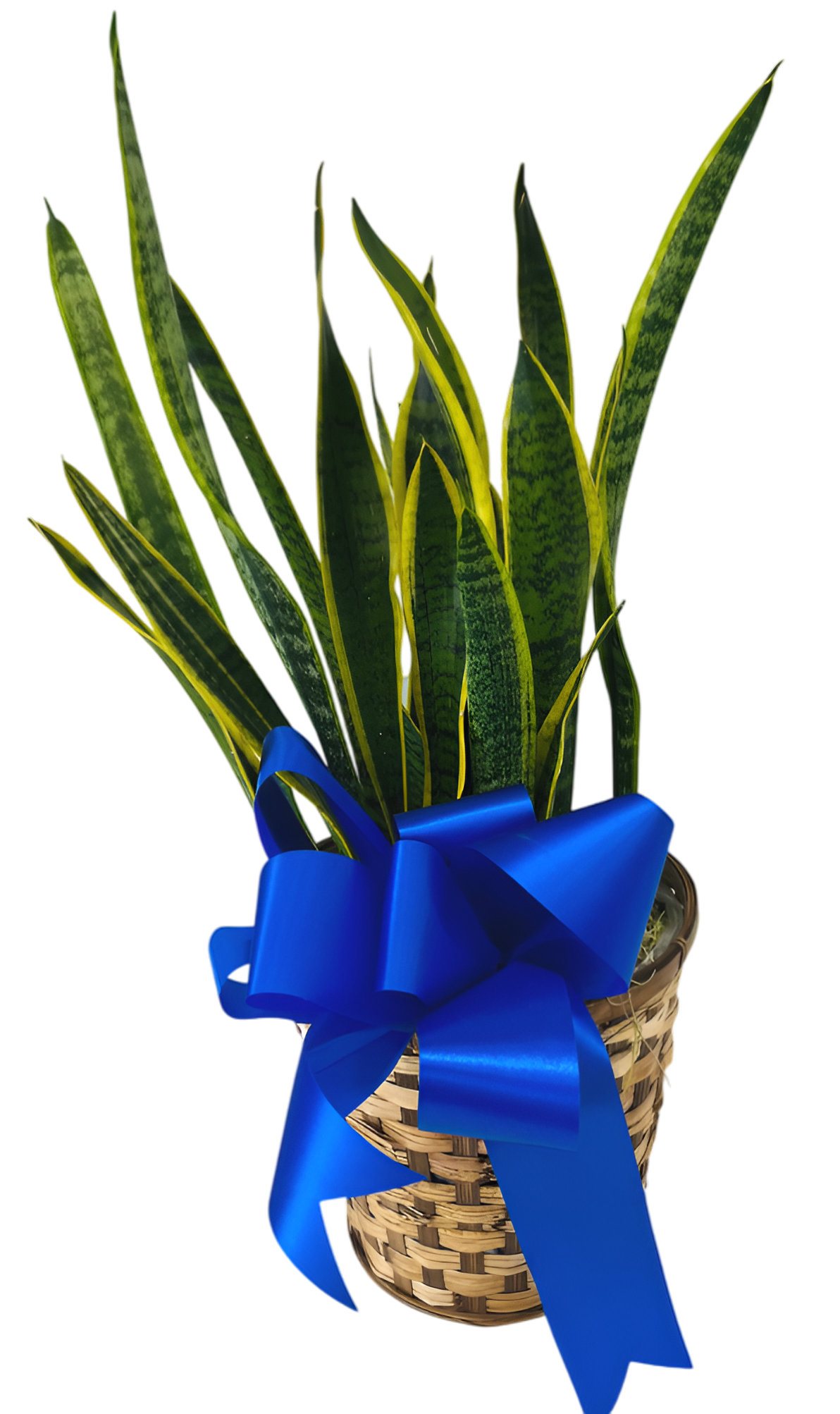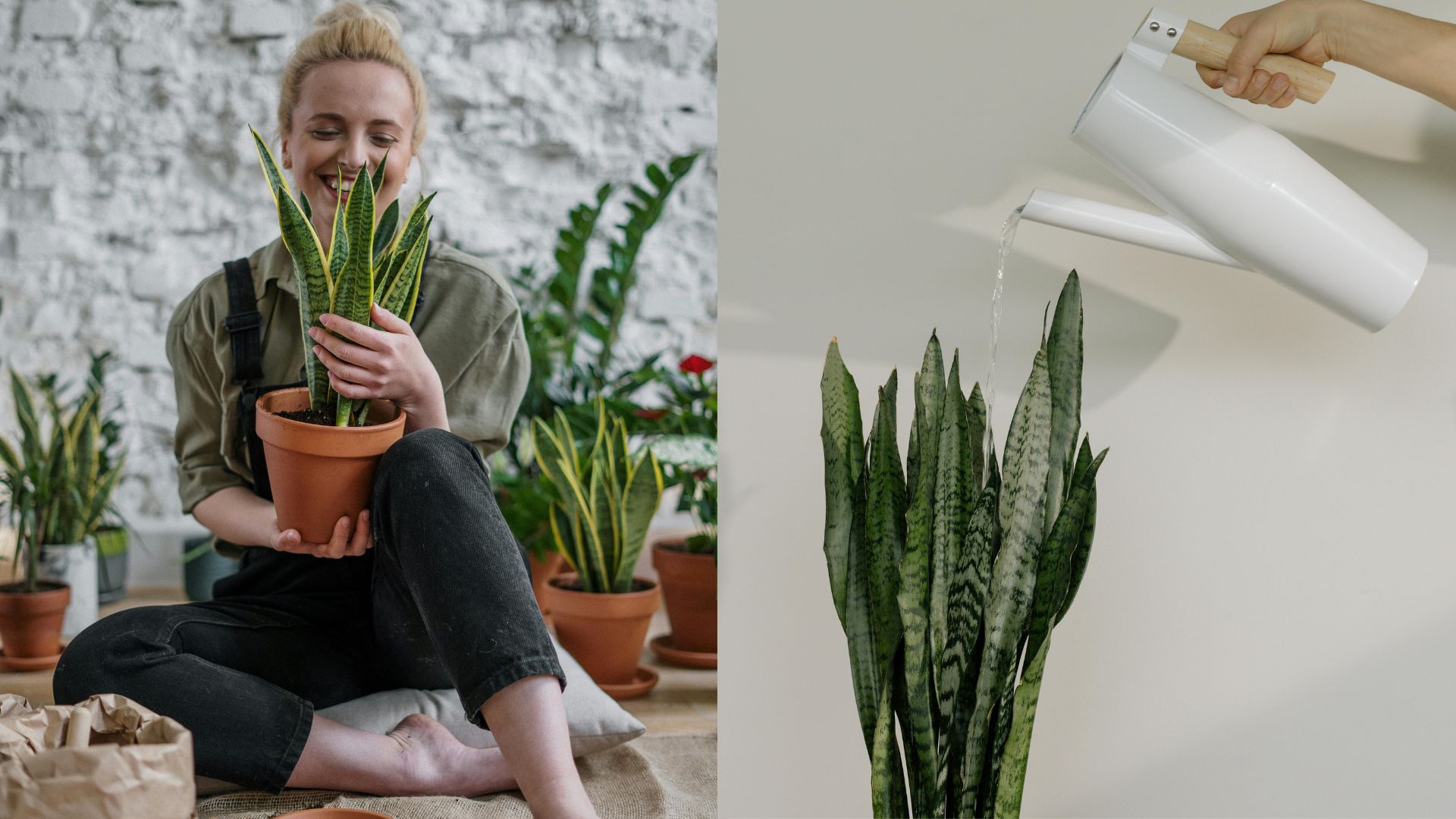Simple Snake Plant Care Tips to Keep Your Plant Happy
Plants have always had a place in our homes, no matter the design, whether it’s a classic Victorian style or a modern, minimalist look. But houseplants became even more popular during the lockdown, when people were stuck at home and looking for new ways to stay busy and feel better. Taking care of plants became a fun and calming hobby for many. Plus, houseplants do more than just look good, they also help clean the air and make our space feel fresher.

One of the most popular indoor plants is the Snake Plant. The name might sound a little scary, but this plant is actually one of the easiest to care for. It’s perfect for beginners and busy people alike. What makes it special is its tall, strong leaves with cool patterns and a neat, straight shape that looks a great addition in any room. If you’re thinking about adding one to your home, learning a few simple snake plant care tips will help you keep it healthy and happy for years to come.
Why Is the Snake Plant Called a Snake Plant?
The snake plant, also known as Sansevieria, got its name because of how its leaves look. The leaves are long, straight, and pointed, with green patterns that look a bit like snake skin. That’s why people started calling it the snake plant. Even though the name sounds a little scary, this plant is actually very easy to take care of. It’s great for beginners and busy people because it doesn’t need much attention.
Types of Snake Plants
There are over 70 recognized varieties of snake plants, and they come in different shapes, sizes, and colors, so there’s one for every type of home or room. Here are 10 of the most popular types of snake plants:
- Sansevieria Trifasciata
- Sansevieria Laurentii
- Sansevieria Zeylanica
- Sansevieria Cylindrica
- Sansevieria Hahnii
- Sansevieria Moonshine
- Sansevieria Black Gold
- Sansevieria Masoniana
- Sansevieria Patens
- Sansevieria Ballyi
Why Snake Plants Are a Must-Have for Your Home
Snake plants are one of the most popular houseplants, and it's easy to see why. Here are the main reasons why you should add a snake plant to your home:
1. Filter Indoor Air: Snake plants help clean the air by removing toxins and releasing oxygen.2. Adds Life to Your Décor: Plants can make your home feel livelier, and the snake plant, with its unique leaves, is a great choice for any room.Natural Mental Health 3. Booster: Studies show that plants can help reduce stress and improve your mood, and the snake plant, with its calming presence, is one of the best options.
4. Easy to Care For: Snake plants are one of those low-maintenance indoor plants that require very minimal attention. You can be busy, and this plant will still stay alive.
5. Long-Lasting: Snake plants are as tough as their namesake reptiles. They can endure various environments, even when conditions aren’t ideal.

Simple Snake Plant Care Tips
Light
Snake plants grow best in bright, indirect sunlight. That means placing them near a window where sunlight comes through but doesn’t hit the plant directly. While they can survive in darker corners or low-light rooms, they won’t grow as fast or look as vibrant. Ideally, they should get 8 to 10 hours of indirect light per day, and even a few hours near a bright window can make a big difference in how healthy and green they look. While they can tolerate a bit of direct sun, too much can burn their leaves. Avoid placing them in windowless rooms like bathrooms unless you keep the lights on for long hours.
Water
Snake plants don’t like too much water, so it's important to only water them when the soil is completely dry. You can check by sticking your finger a couple of inches into the soil, if it feels dry, it’s time to water. Overwatering is a common mistake and can cause the leaves to turn yellow and the roots to rot. These plants are naturally drought-resistant, meaning they’d rather go too dry than too wet.
Soil
Snake plants prefer well-draining soil, which means water should pass through easily and not sit in the pot. A cactus or succulent soil mix works great because it's drier than regular potting soil. If you’re making your own, try mixing potting soil with materials like perlite, sand, or coco coir to help with drainage. Snake plants don’t need to be repotted often, every 2 to 3 years is fine, or when the roots become crowded.
Temperature
These plants like it warm and dry, with the best temperatures between 65°F and 80°F (18°C to 27°C). They can handle a little cooler air, but they don’t like sudden cold drafts or frost. If they’re near a window in the winter, make sure they’re not exposed to cold outside air, as this can cause the plant to rot. Even if your room is warm, a cold breeze from an open window can harm your snake plant. Overall, they’re pretty tough but prefer steady, warm environments.
Feeding
Snake plants don’t need a lot of fertilizer. A balanced houseplant fertilizer used once a month at half strength is plenty, and only during the growing seasons, spring through fall. Don’t feed your plant in the winter when it’s resting. Giving it too much fertilizer can cause salt buildup in the soil, which can hurt the roots and slow down growth. Think of fertilizer like a treat, not a daily meal, too much can do more harm than good.
Common Issues
The most common issue with snake plants is root rot, usually caused by overwatering. If you notice the leaves turning soft, mushy, or yellow, it's a sign that the roots may be in trouble. Let the soil dry out completely before watering again. Sometimes pests like mealybugs or spider mites can appear. These bugs may look like white fluff or tiny webs on the leaves. You can wipe them off with a damp cloth or use a gentle houseplant insect spray to get rid of them.
Pets
Snake plants are toxic to cats and dogs, so it’s best to keep them out of reach if you have pets in the house. They contain natural chemicals called saponins that can cause your pet to feel sick if they chew on the leaves. Signs of poisoning can include vomiting, drooling, or stomach upset. Place your plant on a high shelf or in a room your pets don’t go into often to keep them safe.

Get Your Own Snake Plant Today!
Although they sound a little scary because of their name, snake plants are actually one of the easiest and most beginner-friendly houseplants you can have. If you follow these simple snake plant care tips from Fiesta Flowers, Plants & Gifts, your plant will grow happy and healthy. Visit our shop today and get your very own snake plant. Happy planting!
Recent Posts
Year : 2025
Year : 2024
Year : 2023
Year : 2022
Year : 2021
Year : 2020

